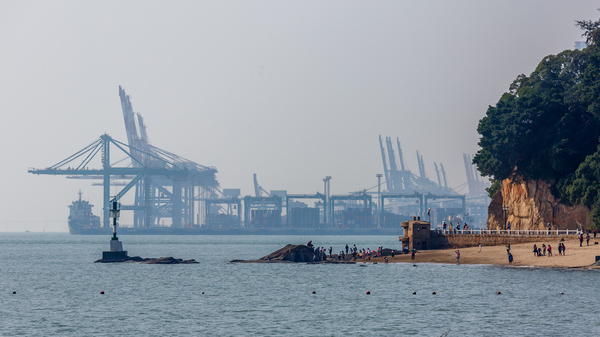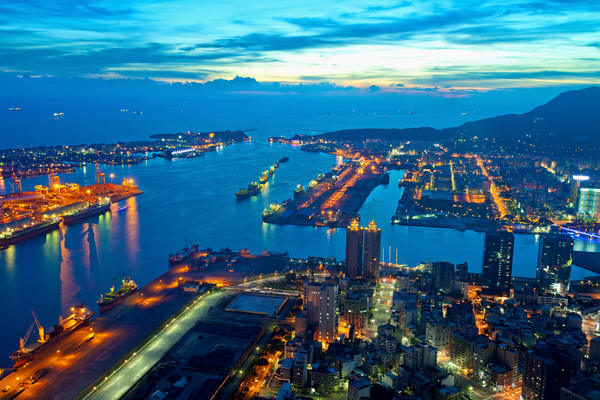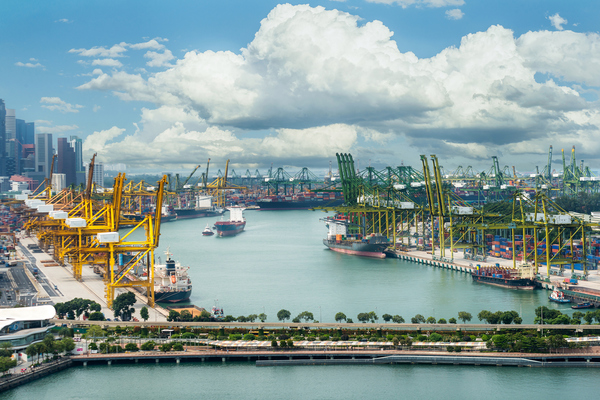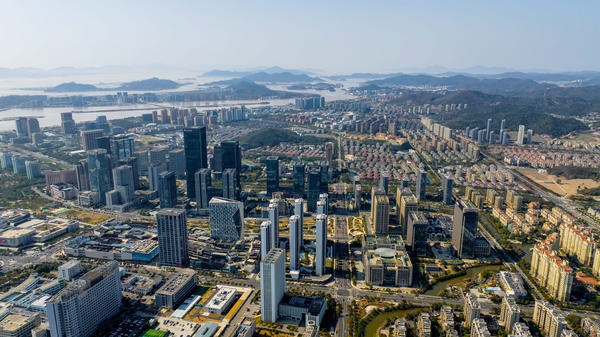East of Suez Fuel Availability Outlook 14 Oct 2025
VLSFO and HSFO availability tight in Singapore
Bunker demand low in Zhoushan
HSFO availability tight across several Japanese ports
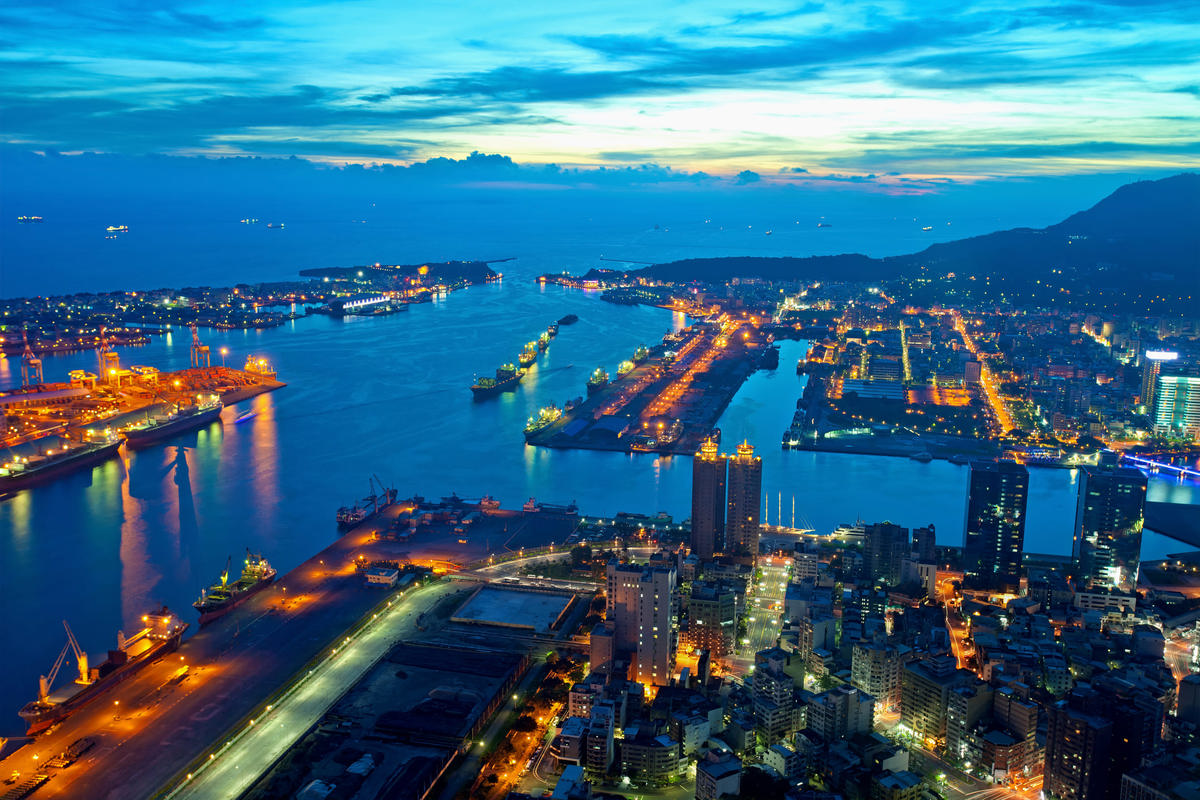 IMAGE: Illuminated Kaohsiung city and harbor at night, Taiwan. Getty Images
IMAGE: Illuminated Kaohsiung city and harbor at night, Taiwan. Getty Images
Singapore and Malaysia
In Singapore, VLSFO lead times continue to fluctuate widely. Some suppliers can deliver in as little as six days, while others recommend booking up to two weeks in advance. A week ago, lead times ranged between 8–14 days.
HSFO supply has tightened slightly, with lead times extending from 6–10 days last week, to 7–12 days now. In contrast, LSMGO availability has improved, with shorter lead times of 3–8 days, down from 6–10 days previously.
Singapore’s residual fuel oil inventories have averaged 5% lower so far in October compared to September, according to Enterprise Singapore. The port’s fuel oil stocks have dipped below 24 million bbls, following a 37% drop in net fuel imports this month. Imports fell by 1.40 million bbls, while exports declined by 236,000 bbls. Meanwhile, middle distillate inventories have risen, averaging 4% higher than last month.
At Malaysia’s Port Klang, VLSFO and LSMGO remain readily available, with prompt deliveries possible for smaller parcels, while HSFO supply remains tight.
East Asia
VLSFO availability in Zhoushan has improved amid muted bunker demand, reducing lead times from 10–12 days last week, to 5–7 days now. HSFO and LSMGO lead times have also shortened, from 10–12 days, to just 3–5 days.
Fuel availability remains uneven across northern China. Dalian and Qingdao have sufficient VLSFO and LSMGO, though HSFO remains tight in Qingdao. Tianjin, however, is facing shortages across all fuel grades.
In Shanghai, both VLSFO and HSFO supplies are constrained, while LSMGO remains comparatively stable. Further south, conditions vary: Fuzhou is seeing limited VLSFO and LSMGO, Xiamen has adequate VLSFO but scarce LSMGO, and Yangpu and Guangzhou are experiencing restricted delivery options for both grades.
In Hong Kong, lead times for all fuel grades remain steady at around seven days. Taiwan’s bunker supply is also stable — VLSFO and LSMGO deliveries can typically be arranged within two days at Keelung, Taichung, and Hualien, and within three days at Kaohsiung.
In South Korea, bunker demand has picked up following the country’s Golden Holiday (3–9 October). Lead times remain steady at around 2–7 days across all grades, according to a source.
However, supply schedules are still exposed to weather-related disruptions, caused by the lingering effects of Typhoon Nakri. Bunker operations could be interrupted in Busan (14–16 October), Ulsan (18–19 October), Yeosu (16–19 October), and Daesan (17–20 October). The September–November period marks a seasonal transition between summer and winter, typically accompanied by unstable weather conditions, the source added.
In Japan, prompt VLSFO supply remains tight across key ports — including Tokyo, Chiba, Yokohama, Kawasaki, Osaka, Kobe, Sakai, Mizushima, Nagoya, and Yokkaichi. LSMGO is generally well supplied nationwide, though prompt deliveries in Mizushima may still face delays.
B24-VLSFO is available only upon enquiry at Tokyo, Chiba, Kawasaki, and Yokohama. HSFO supply has tightened at most ports, with Oita reporting shortages across all grades — VLSFO, LSMGO, and HSFO.
Typhoon Nakri was nearing the southern Izu Islands yesterday morning, bringing heavy rain and strong winds. As of Monday morning, Hachijojima and Aogashima were within the typhoon’s storm zone. The system was expected to track eastward, near the southern Izu Islands today, according to Japan’s meteorological agency.
In Vietnam, LSMGO and HSFO require around three days of lead time for delivery at Nha Trang and Quy Nhon, with truck-based supply. Both grades are also available via truck at Cua Lo, Nghi Son, Vung Ang, Son Duong, and Hon La, a supplier said.
Oceania
In Western Australia, VLSFO and LSMGO are readily available at Kwinana and Fremantle, with most suppliers quoting around seven days of lead time. Deliveries are primarily carried out by barge from a single supplier, while LSMGO can also be supplied by truck. However, strong afternoon winds can occasionally disrupt bunkering operations, a source noted.
In New South Wales, Port Kembla offers VLSFO supply via both truck and pipeline, with a minimum pipeline delivery of 70 mt, while smaller parcels are available by truck. In Sydney, one barge operates alongside truck and pipeline options at select berths, though its schedule is sometimes affected by naval activity and cruise liner movements. VLSFO and LSMGO stocks remain healthy, while HSFO can be limited. Lead times of around seven days are preferred across all grades.
In Queensland, VLSFO and LSMGO are well supplied at Brisbane and Gladstone, both maintaining lead times of about seven days. HSFO in Brisbane is available only on request, while Gladstone may experience occasional weather-related delays. Berth access at Brisbane’s AAT terminal can also be challenging. The port now operates two barges, run by separate suppliers, both offering VLSFO and LSMGO, with HSFO supplied on enquiry.
In Victoria, the ports of Melbourne and Geelong maintain strong stocks of VLSFO and LSMGO, though HSFO availability is tighter, especially for prompt deliveries. Currently, HSFO is well-stocked in Melbourne. A single barge serves both ports, and Bass Strait weather occasionally affects operations. A seven-day lead time is typically recommended. LSMGO can also be delivered by truck at smaller ports such as Portland and Port Welshpool, where lead times average 2–3 days.
Overall, Australian ports are maintaining stable bunker supply, with a general recommendation of seven days’ lead time. However, most ports can accommodate deliveries within 3–4 days thanks to ample availability. Ports equipped with pipeline systems, like Darwin and Dampier, often rely partly on truck deliveries, which can sometimes affect supply consistency.
In New Zealand, bunker operations remain stable, with VLSFO readily available at Tauranga and Auckland. Tauranga also offers pipeline access at certain berths, while Marsden Point can supply both, VLSFO and LSMGO, via pipeline at jetties where vessels are engaged in cargo operations.
Looking ahead, the cyclone season in northern Australia — running from 1 November to 30 April — is expected to periodically disrupt bunkering activity, the source added.
South Asia
In Sri Lanka, bunker supply has strengthened at Colombo and Hambantota, with one supplier now quoting around three days of lead time across all grades, down from five days last week.
Middle East
In Fujairah, prompt bunker supply remains tight across all grades despite subdued demand, as several suppliers face low stock levels and loading delays. Lead times are recommended at 5–7 days, a situation mirrored at the nearby port of Khor Fakkan. Some suppliers can accommodate urgent requests, though typically at a premium, a source said.
In Iraq’s Basrah, VLSFO and LSMGO are readily available, while HSFO supply remains limited. Availability in Saudi Arabia’s Jeddah has improved for both grades, but port congestion continues to hamper operations, the source added.
Meanwhile, Egypt’s Port Suez is facing severe shortages, with VLSFO, LSMGO, and HSFO stocks nearly depleted. Qatar’s Ras Laffan is also seeing tight availability of VLSFO and LSMGO, and Djibouti is experiencing an acute shortage, with VLSFO and HSFO supplies almost exhausted and LSMGO running low.
In contrast, Oman’s ports — including Sohar, Salalah, Muscat, and Duqm — continue to report stable LSMGO availability.
By Tuhin Roy
Please get in touch with comments or additional info to news@engine.online

Contact our Experts
With 50+ traders in 12 offices around the world, our team is available 24/7 to support you in your energy procurement needs.

